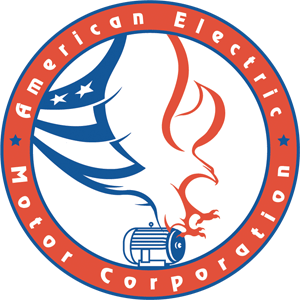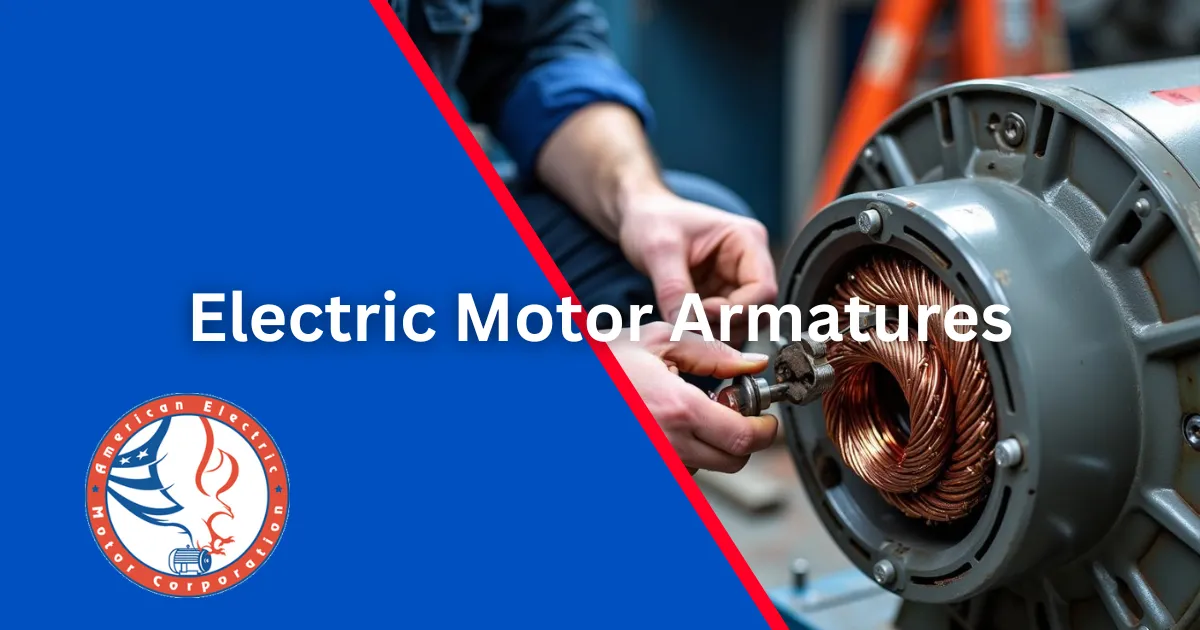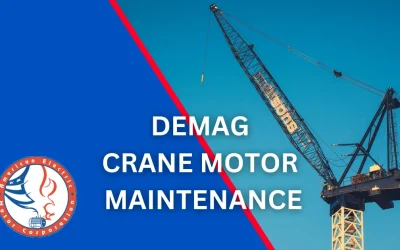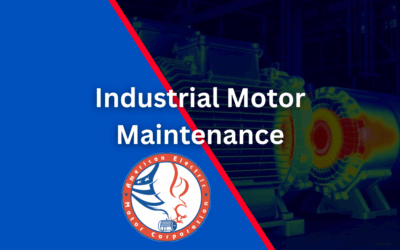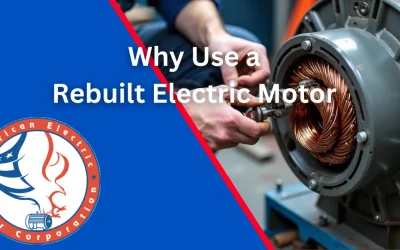Introduction: What Is the Armature of an Electric Motor?
The armature of an electric motor is one of the most critical components in converting electrical energy into mechanical motion. Whether powering overhead cranes, conveyors, pumps, or production systems, the armature is responsible for generating torque and ensuring efficient performance.
At American Electric Motors, with over 50 years of experience, we specialize in diagnostics, rewinding, and custom repair services for electric motor armatures across all applications—from sub-fractional motors to high-powered 2,000 HP systems.
What Does the Armature Do?
In electric motors, the armature interacts with the magnetic field—either from permanent magnets or stator windings—to produce motion. It typically consists of:
- Core (Laminated Steel Stack): Provides a magnetic path and reduces energy loss due to eddy currents.
- Windings (Copper Coils): Carry current and create magnetic fields essential for torque.
- Commutator (DC motors): Reverses current direction for continuous rotation.
- Shaft and Bearings: Transmit mechanical motion to the motor’s output system.
In DC motors, the armature receives current directly. In AC induction motors, current is induced magnetically. In either case, the quality and condition of the armature are key to efficient operation.
Common Armature Failures in Electric Motors
When an armature begins to fail, your motor’s performance suffers—leading to heat buildup, torque loss, and even total breakdown.
Common Causes of Armature Failure
Failure Mode
Insulation Breakdown
Description
Caused by heat, moisture, or chemical exposure
Impact
Short circuits or winding failure
Communicator Wear
Friction and sparking degrade the communicator surface
Poor brush contact, arcing
Winding Damage
Vibration, overload, or thermal expansion
Shorted turns or open circuits
Rotor Imbalance
Due to uneven winding or mechanical damage
Vibration bearing wear
Contamination
Dust, oil, or debris entering the motor
Electrical shorts or insulation breakdown
Regular maintenance and prompt attention to warning signs can prevent most armature-related failures.
How to Diagnose Armature Problems
At American Electric Motors, we use a multi-step diagnostic process to identify armature faults quickly and accurately:
✅ Armature Diagnostic Techniques
- Visual Inspection: Look for discoloration, burnt varnish, cracked insulation.
- Insulation Resistance Test (Megger): Measures how well windings are insulated from ground.
- Growler Test (DC Motors): Detects shorted windings using a magnetic field and metal feeler.
- Commutator Surface Check: Identifies pitting, grooving, or uneven wear.
- Rotor Balancing Test: Ensures mechanical symmetry to prevent vibrations.
- Thermal Imaging: Highlights overheating areas under normal load.
These tests help ensure we don’t just fix symptoms—we address the root cause.
Armature Rewinding: When and Why It’s Needed
Rewinding an armature is often more cost-effective than replacing the entire motor, especially in high-horsepower or custom units.
🔄 The Rewinding Process
- Remove Old Windings: Carefully strip away damaged coils and insulation.
- Core Preparation: Clean and inspect lamination stack for warping or damage.
- New Windings: Rewind using the correct gauge wire and number of turns.
- Insulation & Varnish: Apply high-grade insulation and impregnate with varnish.
- Commutator Service: Resurface or replace if necessary.
- Final Testing & Balancing: Ensure electrical integrity and mechanical precision.
At American Electric Motors, our armature rewinding service uses only premium materials and follows industry-standard engineering practices to ensure long-term performance and reliability.
Benefits of Rewinding an Armature vs. Replacement
- Cost Savings: Avoid expensive OEM replacements.
- Customization: Match your exact voltage, torque, or load specs.
- Faster Turnaround: Especially for obsolete or hard-to-source motors.
- Extended Motor Life: Rewinding restores original performance or better.
- Sustainability: Keeps motors in service longer and reduces waste.
Preventive Maintenance Tips for Electric Motor Armatures
To extend the life of your armature and avoid unplanned downtime, we recommend:
- Regular Inspection: Check for visible wear, overheating, or abnormal noise.
- Scheduled Testing: Perform resistance, insulation, and balance tests periodically.
- Environmental Controls: Keep motor enclosures clean, cool, and dry.
- Brush Monitoring: Inspect and replace brushes on DC motors as needed.
- Load Monitoring: Avoid operating motors at overload conditions for long periods.
Proper maintenance extends service life and improves safety—especially in industrial environments where motors run critical equipment.
Real-World Example: DC Crane Motor Armature Rewind
A large manufacturing plant recently faced repeated failures in a 300 HP DC overhead crane motor. Our inspection revealed:
- Overheated armature coils
- Grooved and worn commutator segments
- Insulation breakdown from oil exposure
American Electric Motors completed a full armature rewind using upgraded insulation and replaced the commutator assembly. After balancing and load testing, the crane motor returned to service with improved performance, reduced sparking, and lower operating temperatures—minimizing downtime and saving the client thousands.
Frequently Asked Questions
Q: How do I know if the armature needs repair?
Signs include unusual vibration, excessive heat, loss of torque, brush sparking (in DC motors), or abnormal noise.
Q: Can all armatures be rewound?
Most can, especially if the core and shaft are in good condition. However, severe mechanical damage may require replacement.
Q: How long does a rewind take?
Most rewinds are completed in 3–10 business days, depending on complexity and motor size.
Q: Is rewinding worth it for small motors?
In many cases, yes—especially when the motor is specialized or if downtime is more costly than repair.
Why Choose American Electric Motors for Armature Service?
We are your trusted partner for electric motor repair, diagnostics, and custom armature rewinding. Our team brings decades of hands-on experience, backed by modern tools and high-quality components. When performance, safety, and longevity matter, we deliver:
- Expert Diagnostics & Testing
- High-Quality Rewinding Materials
- Custom Solutions for Unique Applications
- Quick Turnaround with Zero Compromise on Quality
We serve a wide range of industries—from manufacturing and utilities to construction and municipal systems—ensuring your motors keep running reliably.
Need Help with an Electric Motor Armature?
If you’re experiencing motor problems, or suspect armature failure, don’t wait. Contact American Electric Motors today for fast, reliable armature diagnostics, repair, and rewinding. Our expert team is ready to get your equipment back online—better than ever.
📞 Call us or visit our contact page to schedule a consultation.
